|

|
Barra Verde tailings operation:
|
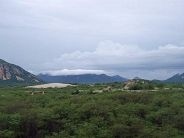
|
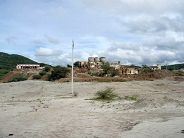
|
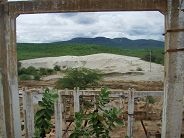
|
|
Nomen est omen - our base, the “Tungstenio Hotel” with “Scheelita Bar” in Currais Novos.
|
The Barra Verde tailings and ancient ore treatment plant, seen from Mina Brejui.
|
The tungsten skarns were first mined in the 1940s, production continued until the 1980s.
|
The three main mines of the region have left more than 10 Mio tonnes of tailings @ 0.15 % WO3.
|
|
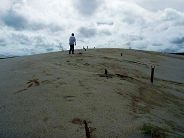
|
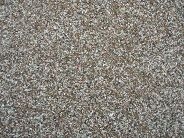
|
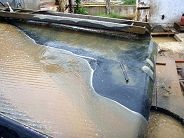
|
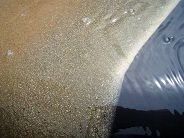
|
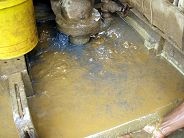
|
|
The Barra Verde tailings are being retreated by for their scheelite and molybdenite.
|
Close-up view of tailings with garnet, diopside, calcite, minor scheelite, pyrrhotite, pyrite, molybdenite and chalcopyrite.
|
Shaking table at Barra Verde.
|
Close-up view of shaking table, the white parts contain mainly scheelite, followed by a mixture of sulfides with appreciable amounts of scheelite.
|
Flotation cell at Barra Verde, the bluish black mineral is molybdenite.
|
|
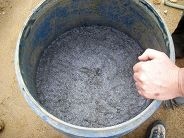
|
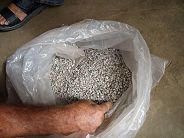
|
Boca de Lage tailings:
|
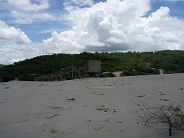
|
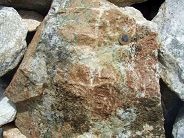
|
|
Molybdenite concentrate
|
A particularly coarse grained scheelite concentrate.
|
The Boca de Lage tailings seem to contain less molybdenite, the scheelite contents are comparable to those of the other tailings.
|
Typical skarn ore with garnet, pyrrhotite, chalcopyrite and minor scheelite.
|
|
Mina Brejui:
|
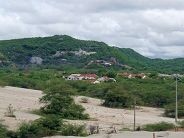
|
|
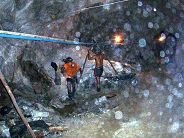
|
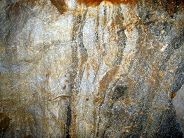
|
|
The Brejui Mine is the only tungsten mine in the region which is in continuous production since decades.
|
One of the entrances to the mine.
|
Underground workings at Brejui Mine.
|
Typical tungsten skarn ore with garnet, calcite, scheelite and diopside.
|
|
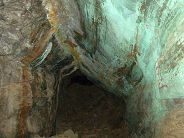
|
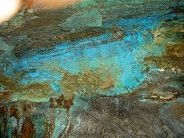
|
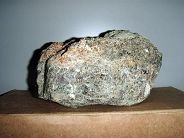
|

|
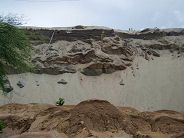
|
|
During the operation a shear zone hosted high grade copper mineralisation was encountered but was never mined.
|
Close-up view of secondary copper minerals that formed in the shaft.
|
Sample of high grade tungsten ore with ca. 3 % WO3, main minerals are garnet, diopside and scheelite.
|
Same sample as before under short wave ultraviolet light high-lighting the scheelite.
|
Due to its long operation time, the tailings of Mina Brejui are the most important of the area.
|
|
Cafuca Scheelite Mine:
|
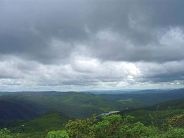
|
|
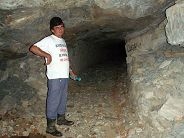
|
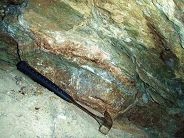
|
|
Landscape between Cafuca Mine and Currais Novos
|
Entrance to the Cafuca Scheelite Mine
|
The mine was once run by Union Carbide, they produced approximately 40 t/month of WO3 concentrate.
|
At least 3 high grade ore shoots are known at Cafuca. This particular one contains some 3 % WO3.
|
|
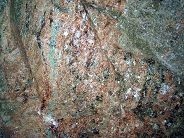
|
|
Bodó Mine:
|
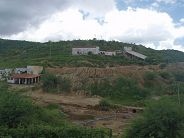
|
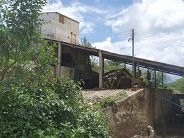
|
|
Close-up view of high grade ore with garnet, diopside and scheelite.
|
According to CPRM, the Brazilian Geological Survey, the main ore shoot contains some 1,300 t of WO3 (unspecified category).
|
This still producing underground mine produces scheelite concentrate from a prograde skarn
|
The ore mineralogy is fairly simple with scheelite, molybdenite, bornite and chalcopyrite.
|
|
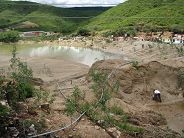
|
Mina di Edilson, Paraiba State:
|
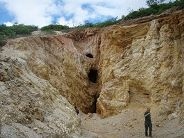
|
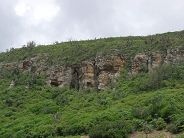
|
|
Their tailings as well contain appreciable amounts of scheelite in the fines.
|
This highly differentiated pegmatite body contains several quartz nuclei. During the last tantalum boom, the mine produced mainly tantalite, now it produces mainly kaolinite.
|
Host rocks are quartzites of the Equador Formation.
|
|
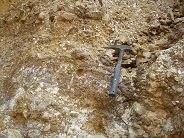
|
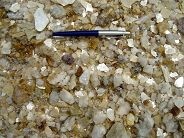
|
Copper-gold- bismuth-silver pegmatite east of Parelhas, Rio Grande del Norte State:
|
|
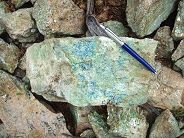
|
|
A lepidolite rich zone rich in tantalite (Ta >> Nb).
|
Close-up view of tailings with quartz, white mica and lepidolite.
|
A quite uncommon zoned pegmatite (center of picture) carrying economic grades of Cu, Bi, Au and Ag.
|
Sample with secondary copper minerals (probably azurite and malachite) in coarse pegmatite.
|
|

|

|
Tantalum pegmatites between Santa Cruz and Currais Novos:
|
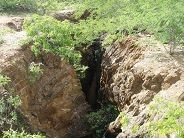
|
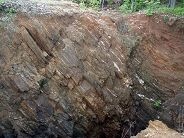
|
|
A particularly mica rich part of the pegmatite carrying secondary copper minerals.
|
Granophyric pegmatites are only locally mineralized.
|
The area around highway 427 is known for numerous columbite (Nb > Ta) bearing pegmatitic veins. The veins are 2 to 4 m wide and were mined down to depths of 15 - 20 m.
|
Host rocks are metasedimentary rocks of Proterozoic age. Drainages in the vicinity carry alluvial gold of unclear primary origin.
|

